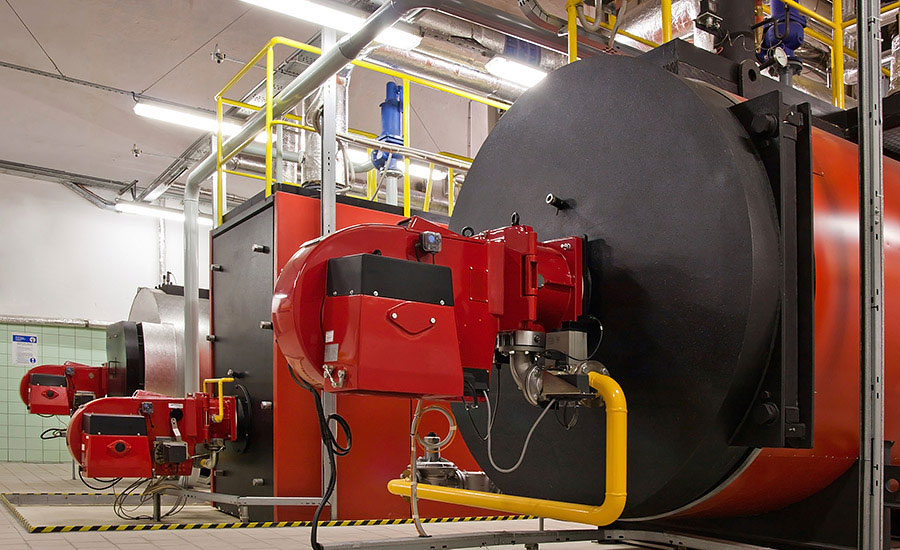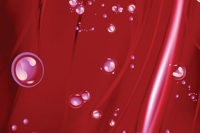Whether it takes the form of low-cost adjustments and calibration, targeted replacements within the system, or a more substantial retrofit project when large equipment has run its course, you almost always have a good move available to conserve energy and expense.
Boiler retrofits can reduce operating costs, reduce greenhouse gas emissions, and provide better reliability. The primary focus of a boiler retrofit is to accomplish these goals without compromising comfort, safety, or quality. This article provides recommendations about three types of retrofits, which should generally be prioritized in the following order.
1. Low Cost O&M Strategies and Tactics. O&M tactics and other low-cost/no-cost tactics should be considered first because they can make a big improvement with minimal investment. These strategies and tactics can often be performed by on-site staff. O&M tactics, when performed regularly, can maintain energy efficiency over the life of the equipment and often save additional costs by extending equipment life.
Example: Regularly calibrating the boiler water treatment sensors saves energy and extends equipment life. If we blowdown more than needed, we waste chemicals and pay to heat makeup water. If we blowdown less than needed, we risk scale and corrosion, which adds to pump energy use and contributes to shortening system life.
2. Capital Investment Retrofits. Energy efficiency retrofits requiring significant capital investments should be prioritized after low-cost/no-cost O&M retrofits have been implemented. These retrofits may be expensive, but their energy cost savings will often pay for the initial investment within a reasonable timeframe.
Example: Installing a modulating burner on the boiler will, on average, save 20% to 30% of boiler energy.
3. End-of-Life Retrofits. In this type of retrofit, a less efficient unit that has reached the end of its useful life is replaced with a more efficient unit. An end-of-life measure accounts for the avoided costs of the less efficient unit. The payback period for an end-of-life measure is calculated using the difference in cost between a like-for-like replacement and a more efficient model.
Example: Replacing an old natural draft hot water boiler for a potable hot water system that costs $50,000 with a condensing boiler that costs $60,000 can produce annual savings on the order of $4,000 per year. The simple payback for the investment in the condensing boiler is only ($60k-$50k)/$4k = 2.5 years.
To maximize your return on retrofit projects, it is also important to get trained on using and maintaining the new equipment. Refresher courses are also valuable because they usually include a lot of real-life experiences. Training provides the benefit of other successful and some not so successful installations and operations. Formal training is a great way to learn from others’ accomplishments and mistakes.
Low-Cost Strategies and Tactics
Projects in the low- to no-cost category include equipment operational changes and procedural changes.
Examples of low-cost tactics include the following.
Outside air reset. Allowing the supply water temperature on hydronic heating systems to drop as the load decreases will save energy and allow the boiler to remain on longer. The typical place to start with this strategy is to supply 180?F water when outside air (OSA) is 25?F, and supply 150?F water when OSA is 60?F. Because each building has unique heating loads due to envelope losses, ventilation air, and internal heat gains, the supply water temperature should be monitored and the reset modified to assure the return water temperature is never lower than 140?F to prevent flue gases from condensing, unless you have a condensing boiler.
Differential pressure setpoint. Controlling the speed of a pump based on the lowest differential pressure setting will allow the pump to operate only as much as needed to meet the demand of the most remote coil.
Differential temperature setpoint. Adjusting the boiler rate based on a difference in temperature between the supply and return water temperatures is another way to assure the boiler is only heating the water enough to meet the load.
Oxygen trimming setpoint. The efficiency of the boiler is directly related to providing the proper air to fuel mixture. You can provide good oxygen trimming in several ways. The single control actuator is much more vulnerable to being out of calibration, costing more in fuel and resulting in inconsistent burner operation. The digital control, two-point system offers more reliability, precision, and repeatability day in and day out. With digital control, you can monitor the combustion process in real time and make appropriate adjustments automatically.
Schedule of recalibration. Recalibrating all sensors, dampers, linkages, pins, etc., should be an annual routine. Un-calibrated equipment is one of the biggest causes of discomfort, inefficiency, and costly operation. You can develop a list of all the components in your facility by starting with the points listed from the design specification. Divide the items into 12 groups, which you can then add to your monthly schedule. Recalibration should be a routine, just like filter replacement.
Insulate piping to reduce radiation and convection losses. Every ft of uninsulated pipe that carries hot water wastes energy. These standby losses can account for significant waste.
Stack temperature. This is a good way to determine how efficiently the boiler is operating — the hotter the stack temperature, the less the input energy is transferred to the hot water. The rule of thumb is for every 40°F the stack temperature is reduced, the efficiency increases by 1%. Adjustments to the operation should be done by a licensed boiler operator or with the assistance of the boiler manufacturer’s representative.
Combustion air temperature. The warmer the combustion air temperature, the more efficient the boiler. Locating boilers inside will improve the efficiency. Here also, the rule of thumb is for every 40°F rise in combustion air temperature, efficiency increases by 1%.
Number of boilers in operation. Operate only as many boilers as needed to meet the load.
Blowdown duration and frequency. Water that is removed from the system will need to be made up. The makeup water is about 55°F and needs to be heated to a usable temperature. Reducing the amount of water that is blown down will save energy.
Chemical feed. The water needs to be treated with a biocide and a corrosion inhibitor to keep the pipes clean. Pipes clogged with organic matter or corrosion will increase operating and maintenance costs.
Capital Project Retrofits
Capital retrofits include the following.
-
Replacing 3-way valves with 2-way valves
-
Installing VSD on pumps
-
Making controller upgrades
-
Installing a flue gas oxygen analyzer, damper actuator, modulating burners, and boiler dashboard
-
Replacing the pressure-reducing station with a back pressure turbine, blowdown controls, and high-efficiency burner
-
Using waste heat recovery to preheat combustion air and feed water
-
Installing a high-efficiency burner
Many retrofit components have a simple payback of less than two years. Your boiler supplier and/or mechanical engineer can help you determine the viability of each opportunity. You can also apply “typical savings” to get a reasonable payback estimate.
Another item to consider when making capital retrofits is the quality of the upgraded component. There will always be at least three options to consider: burners, controls, and heat recovery. Each option needs to be evaluated for first cost, maintenance cost, efficiency, operation reliability and repeatability over time, and component life/guarantee.
Burner Retrofit
Burners are the key to maximizing efficiency and reducing emissions. Boiler manufacturers can be great resources to identify the best burner for your specific application.
Controls Retrofit
A good controls system will provide repeatable and consistent control and monitoring of each boiler accessory. A controls system will allow for constant monitoring of each component to assure reliable operation of the boiler. A controls upgrade typically provides the best return on your investment. Your boiler representative will offer several control upgrades to consider. The controls retrofit will handle the lead/lag control of multiple boilers, implement auto-rotation schedules, control pressure and temperature, reduce cycling, maximize efficiency operation, and optimize emission reduction levels.
Heat Recovery Retrofit
Several heat recovery opportunities worth discussing with your boiler representative allow for preheating feedwater, makeup water, or process water with heat that had been wasted. This equipment will have reasonable payback periods. Install heat recovery equipment to extend the life of your boiler and save money. One opportunity is to install the stack economizer to remove heat from the flue gasses. Capturing the flash steam off the deaerator is another way to recover waste heat. While it is important to have blowdown to maintain good levels of dissolved solids in the boiler system, you can recover almost all of the heat from the blowdown to save energy and money.
Three primary ways to recover heat for other purposes are at the stack, at the deaerator, and at the blowdown station. The stack economizer recovers heat from the flue gasses. Capturing the flash steam off the deaerator is another way to recover waste heat. It is important to have blowdown to maintain good levels of dissolved solids in the boiler system, but you can recover almost all the heat from the blowdown to conserve energy and money.
A capital project with a very quick payback, and which is often eligible for incentive funds, is to add a steam turbine where applicable. A boiler designed for 250 psi operates optimally at 250 psi, so allowing it to operate at design pressure and using the excess pressure to generate electricity may be of interest for sites with power interruptions and/or high electric rates. Heat recovery on a steam boiler that can provide steam at a minimum of 250 psi where less than 30 psi is needed to support the loads is a great opportunity to install a back pressure steam turbine. A condensing turbine uses the boiler to provide power during a power outage. A backpressure/condensing turbine can provide power and heat from your boiler under normal operations and when there is a power outage.
End-of-Life Retrofits
When it is time to replace an old boiler, you will want to consider these primary issues: maintenance costs, boiler performance, and efficiency.
Maintenance costs. Maintenance costs include costs and availability of replacement parts, schedule or frequency of down time, and operator time to keep the unit running. These costs can steer your decision toward a specific manufacturer or model.
Boiler performance. New packaged boilers must meet higher performance standards than older boilers. Boiler technology is continuing to evolve and getting better at repeatable and accurate operation of fuel burner ratio, turndown, excess air trim, emission controls, and more.
Efficiency. For an end-of-life retrofit, many efficiency upgrades can be considered. This is the time to confirm that the boiler capacity is appropriate for the current load to maximize the part load operation. A boiler sized for an older building — before computers were prevalent and windows, exterior walls, and the roof were insulated using modern technologies — may be oversized for the current operation. Conversely, the boiler in an older building that was heated in part by inefficient lighting may be undersized after a lighting retrofit project.
Other Considerations
When considering a boiler replacement project, you may also want to consider supplementing the boiler operation with combined heat and power (CHP). CHP can help you meet your facility’s thermal and electric demand, enhances power reliability, and provides lower operating costs for your customers. Facilities that will benefit the most from these features include those that provide critical services like hospitals, wastewater treatment plants, airports, prisons, and 911 operations. Other buildings that will benefit from CHP include multi-family housing, grocery stores, recreational centers, and hotels.
Boilers and boiler accessory technologies are evolving rapidly. It is important to get qualified training on a regular basis. Most professions require that those who hold certificates related to these technologies — including boiler operators — receive a specified amount of training annually. Training is available from a variety of sources, including your boiler representative. Training that helps you recognize problems, identify solutions, and stay abreast of existing and future developments in the boiler arena will help make your operation safer and more efficient. And your boiler will be more reliable and last longer.




